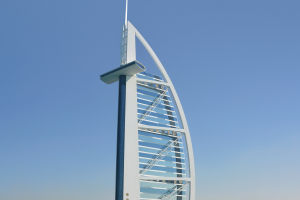Nestled high in Peru’s Andes, Machu Picchu stands as a testament to Inca ingenuity.
Believed to be an ancient citadel built in the 15th century, this site boasts breathtaking terraces and temples built into the cliffs, seemingly blending with the rugged mountainscape.
For those with a sense of adventure and wonder, Machu Picchu offers a step back into a time when mountains met spirituality, agriculture, and mystery.
Easily reached via Cusco, this gem is the perfect escape to explore some of humanity’s greatest architectural accomplishments, all from dizzying heights. Ready to travel back in time?
Getting There: Your Journey Begins
Since there’s no simple way to reach Machu Picchu, you will start your journey directly from the airport! Most travelers fly into Cusco and then travel to Aguas Calientes, the town at the mountain's base. You can hike the famous Inca Trail for around $600-$1,000, depending on the tour company, for a guided, multi-day trek. Alternatively, the scenic train journey from Cusco to Aguas Calientes, offered by PeruRail and Inca Rail, costs between $50 and $200 each way, depending on the service level. Both routes offer spectacular views, though you’ll want to book tickets early as they’re in high demand.
Where to Stay: The Hidden Village Below
Aguas Calientes, the town that hugs the base of Machu Picchu, serves as the last stop before the ruins. Accommodations range widely, with budget hotels available for as low as $20 per night, like the Mistico Machupicchu Eco B&B, and more luxurious options like Inkaterra Machu Picchu Pueblo Hotel, which can cost up to $500 per night. The town also has a handful of hot springs, perfect for unwinding after an arduous hike or long day. If you’re planning to catch the sunrise at Machu Picchu, staying in Aguas Calientes is ideal, letting you hop on the first bus up the mountain.
What to Expect at the Ruins
Upon reaching Machu Picchu, you’ll step into a network of ruins spread over a staggering 200 terraces. Highlights include the Intihuatana, or “Hitching Post of the Sun,” a mysterious stone that Incas believed held ceremonial significance. There’s also the Temple of the Condor, with its carved condor head - a must-see for those fascinated by Inca mythology and craftsmanship. And here’s a pro tip: once you’re on one of Machu Picchu’s marked paths, you’ll need to follow it, as the rules discourage doubling back to minimize crowding and preserve the ancient architecture.
Entering the Ruins: Ticket and Access Fees
Tickets to Machu Picchu itself cost around $45-65 for adults (higher for peak times and certain add-ons, like hiking up Huayna Picchu). These tickets should be bought well in advance, as visitor numbers are capped to protect the site. From Aguas Calientes, you’ll also need a bus ticket to the Machu Picchu entrance, which costs around $24 for a round-trip. Hiking up to the entrance is free, but it’s a challenging climb; many opt for the bus to save energy for exploring the ruins.
Don’t Forget the Essentials
A few essentials can make or break your visit. Bring plenty of water, sturdy shoes, and mosquito repellent since you’ll be wandering at high elevations and likely exposed to changing weather. Machu Picchu’s layout allows no large backpacks to protect the site’s delicate stonework, so pack light. Snacks can be scarce (and overpriced) once inside, so pack food from your hotel for a well-fueled exploration. The Peruvian sun at this altitude is surprisingly intense, so sunscreen and a hat are lifesavers. Plan on a few stops to catch your breath and take in the views; after all, altitude is part of the adventure!
To wrap up your visit, don’t miss a chance to try “mate de coca,” a traditional tea made from coca leaves. The locals swear by it for altitude sickness, and it’s the perfect sip to reflect on a day spent exploring the mysteries of this ancient place. With Machu Picchu offering everything from awe-inspiring views to insights into a lost world, there’s no question it deserves its title as one of the new Seven Wonders of the World - each stone, terrace, and trail whispering stories of Inca grandeur and resilience!


